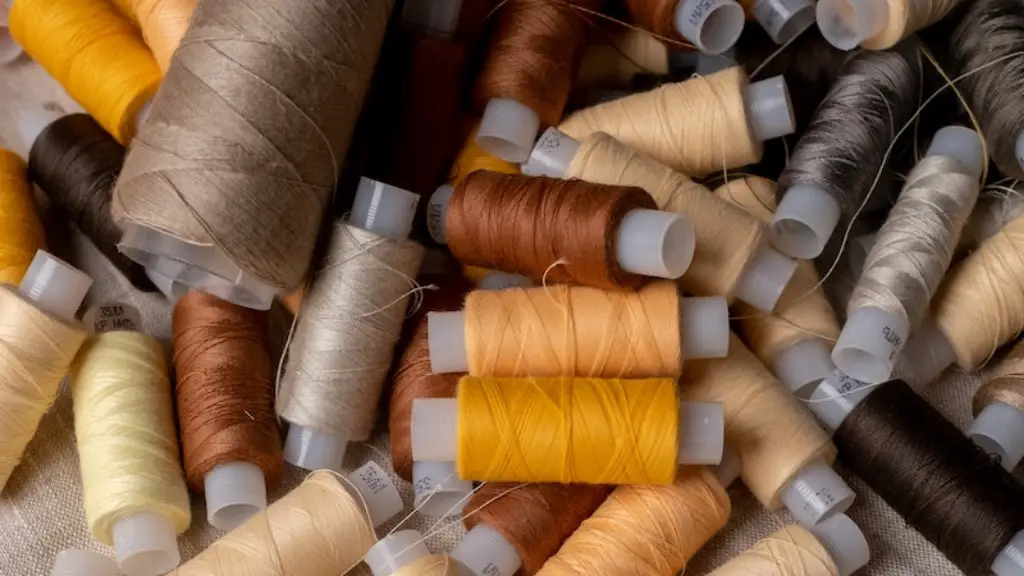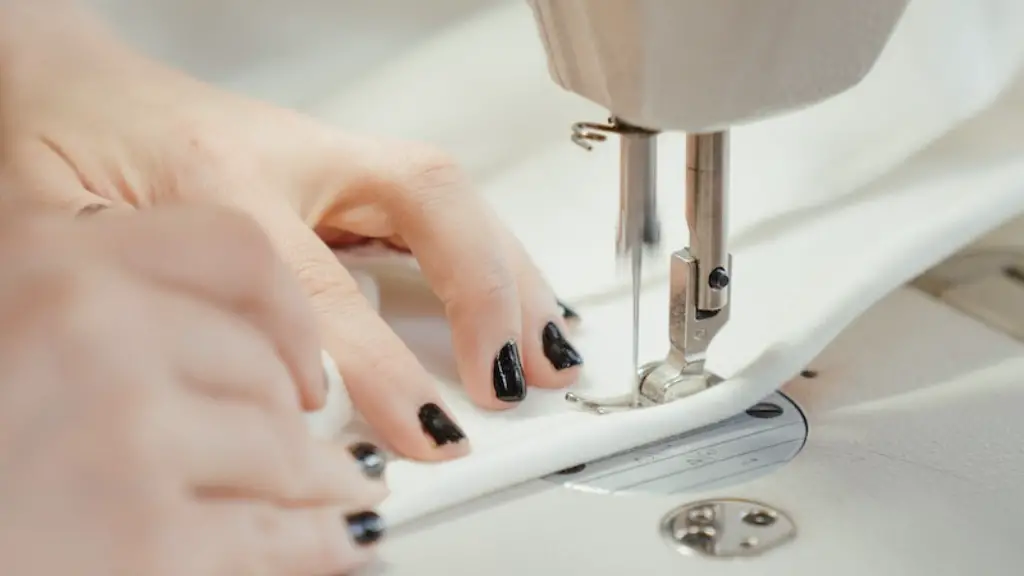Materials Required
Whether you’re hemming new leggings or doing some reparations on an old pair, hemming leggings without a sewing machine is a task you can tackle with basic supplies. You will need a measuring tape, thread, tape and fabric chalk or a laundry marker, fabric scissors, and a hand needle. Optional extras include a special fabric glue or a pair of fabric-covered buttons.
Instructions
Start by measuring the length of the leggings you are hemming with a measuring tape. Put them on and stand up, and mark with a tape or with chalk from the inside where you want to hem the bottom of the leggings. Or take them off, fold them in half and measure from the longest side. The hems should be the same length for each leg.
Cut the folded leggings to the right size with a pair of fabric scissors. Unfold the fabric and make sure that it isn’t fraying, as this can lead to it unraveling in the future. If the fabric is fraying, you can use pinking shears or use fabric glue or a few stitches to secure it.
Now it’s time to sew the hem. Take a hand needle and some thread, and begin by inserting the needle to the inside of one leg, making sure not to accidentally sew through to the outside. Once the thread has been inserted and the two ends have been tied together, start to make small, tight stitches along the hemline.
If you want to make the hem look really neat, you can use a few stitches of special fabric glue at the beginning and at the end, as extra reinforcements so that the hem doesn’t become undone. This is entirely optional, however.
Finish the hem by knotting the thread on the inside of the leg, and then securing it and cutting off the excess thread. Repeat this same process on the other leg, and your leggings will now have professional-looking hems without requiring a sewing machine.
Alternatives to Stitching
If you don’t feel comfortable stitching the bottom of your leggings and don’t want to risk it becoming undone, there are still some alternatives you can use. One possible method is to use a pair of fabric-covered buttons. The way to do this is by creating two buttonholes with a buttonhole tool and sewing two fabric-covered buttons on each end with a hand needle. This is a good alternative for times when sewing a hem isn’t possible, such as if you can’t access a hand needle or thread, or if you have a thicker fabric like denim.
Helpful Tips and Tricks
Some tips and tricks can help you get the perfect hem. For example, when selecting the right thread, it’s important to pick one with a colour that matches the fabric you are working with. This will make the stitches blend in with the fabric and avoid any noticeable imperfections in the finished product.
Carefully review your work after each section and make sure no mistakes have been made that may lead to the hem unraveling in the future. It’s always better to double check than to have to re-do the entire process.
Finally, avoid using a sewing machine for this kind of task. Although it would make the process faster, chances of mistakes being made are much higher and it’s not necessary for this type of hem as it requires just a few small stitches.
Pros and Cons of Hemming Leggings Without a Sewing Machine
The biggest benefit of hemming leggings without a sewing machine is that it can be done easily, quickly, and with basic supplies. It doesn’t require a lot of skill and can be done by anyone.
On the other hand, hemming leggings this way doesn’t guarantee a professional-looking finish and it may come undone if not done properly. Also, the process can be tedious and time-consuming, especially if you have to do a lot of hemming. Another negative is that it’s not recommended for thicker fabrics like denim, as hand stitching may not be enough to secure the fabric.
Expert Advice for Hemming Leggings Without a Sewing Machine
According to fashion expert Emma Forsberg, the best way to make sure your hemmed leggings last is to use the right thread and to make sure it is the same colour as the fabric. This will make it harder for the stitches to become undone, as they won’t be easily noticeable.
The experts at Galt Technologies also recommend using a fabric glue, highlighting that it adds extra support to the hem, making it more likely to hold up over time. This is especially useful for thicker fabrics, as the additional glue provides an extra layer of protection.
How to Extend the Life of Hemmed Leggings
One way to extend the life of your hemmed leggings is to make sure they are properly cared for. Hand-wash them with a mild detergent and avoid tumble drying them. Hang them up to dry naturally and only fold the bottom of the leggings, so the rest of the fabric doesn’t get creased.
Using common sense is also important in order to keep the leggings from fraying – avoid sitting on rough surfaces and be careful when wearing jewellery or belts, as these could get caught on the fabric and create holes.
Finally, if you want your hemmed leggings to last, invest in quality fabrics with a tight weave and make sure the thread you are using for stitching is also durable and of good quality.
Using Fabric Trim to Update Leggings
A fun way to update hems of leggings is to use fabric trim. This is a great way to add a personal touch to your wardrobe, as fabric trim comes in a wide range of colours, sizes and shapes. The way to do this is to cut the fabric trim to the size of the bottom of your leggings and then glue it on, or sew it on if you don’t have fabric glue. The latter give a more polished look and feel as it ensures that the trim won’t be coming off anytime soon.
You can also use fabric trim to cover holes or frayed areas, or to simply add a decorative touch to the bottom of the leggings. Experiment by mixing and matching different fabrics and textures to get a unique look.
Using Hot Glue to Make Leggings Shorter
Using hot glue is a common method for making longer leggings shorter. It’s a quick and inexpensive way of instantly transforming your existing clothes into something different. Start by folding the excess fabric at the bottom of the leggings and place a few lines of hot glue along the hemline. Make sure not to use too much glue and allow it to cool completely before wearing them.
This method gives your leggings a frayed, distressed look and is a great way to add a unique touch to your wardrobe. It’s also a good option for keeping your leggings in rotation when you gain or lose a few inches. However, it is not advisable to use hot glue on thicker fabrics like denim, as it won’t be enough to secure the fabric down.
Selling Hemmed Leggings
For those who are interested in making money by selling their hand-hemmed leggings, the best way to do this is to start a side business online. There are many platforms available such as Etsy, where entrepreneurs can start their own shop and list handmade garments, including leggings.
Before selling them, however, it is important to make sure your hems are properly done. Experiment with different fabrics and trims, to give your leggings a unique look. Also, use quality fabrics and thread, as this will make your leggings look more professional and likely to hold up better over time.
In addition to hand hemming, you can also experiment with other sewing techniques, such as patches and appliqués, to further enhance your leggings. The key is to make sure your leggings stand out from the rest by giving each piece a unique, personal touch.
Final Thoughts
At the end of the day, hemming leggings without a sewing machine is a simple and accessible task that doesn’t require a lot of supplies. Although it can be a bit tedious and requires a bit of skill, it’s still a great way to instantly upgrade your wardrobe and give your leggings a professional finish.
To make sure your hemmed leggings last, and if you are interested in selling them, it’s important to use the right materials, carefully review your work and add touches of personalisation or style.





